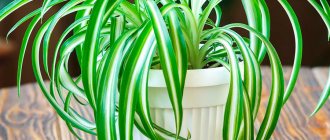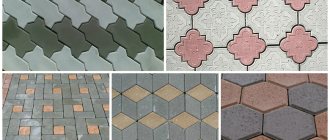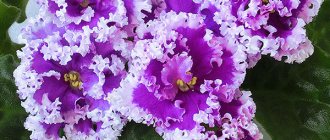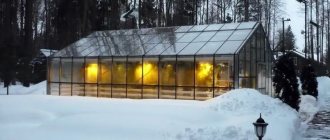Hydroponics is a method of growing plants in which soil is not used, and the elements required for life come from an aqueous solution.
A number of gardeners continue to be skeptical about hydroponics, but it has been extremely popular in homes for a long time, although it does require certain expenses.
The method is based on the idea that for plants to develop, they need oxygen, ultraviolet and infrared radiation, water, minerals and various chemical compounds. Moreover, if the root system receives the substances required for growth from the nutrient solution, then soil is not necessary.
The hydroponic method seems complicated to inexperienced growers when compared to traditional growing of crops in pots. Hydroponic growing comes in many different forms and can range from a large-scale computerized system with sensors that control all the important functions and indicators to a bucket of sand in which a single plant is watered by hand. Most systems are a middle option between these extremes.
The article provides tips that will allow a beginner in the field to successfully grow healthy plants using hydroponic equipment, for example.
No. 1 Choosing an assortment of plants
The universal hydroponic method allows you to grow any crop. However, there are a number of factors that determine the possibility of such cultivation:
- Lack of cool winter conditions. All other things being equal, almost all plants can overwinter at temperatures above +15°C. For other species, there is a possibility of root rotting.
- Development of the root system. If the roots grow too much, the pot has to be replaced frequently, which adversely affects homeostasis in the system.
- The presence of tubers and rhizomes is a serious problem. In this case, there is a considerable probability that the roots will rot.
The hydroponic growing method works well with perennial plants. The most popular vegetable produced in this way on an industrial scale throughout the world is the tomato. Also often used are various varieties of lettuce, spicy kohlrabi cabbage, green onions, radishes, medicinal lemon balm, cucumbers, hot peppers, mint, and most bush berries. The most undemanding plants include ferns, succulents and horsetails, as well as annuals and flowers.
Is it possible to grow greens hydroponically?
Many types of greens can be grown using hydroponics. This is not a complete list of green crops that grow well not in ordinary soil, but in a nutrient solution:
Of course, proper organization of the hydroponic installation is necessary; for example, onions do not like excessive moisture - the flow method is not suitable for it. But this method is good for dill, lavender, basil and many other spicy annuals.
One of the simplest schemes for organizing a flow-through hydroponic installation for greenery consists of two buckets, a pump, hoses and several gutters with filler
The parameters that need to be taken into account when growing greens are described below. If an ordinary gardener is interested in lighting, temperature, soil, watering, temperature, then a hydroponist is interested in equipment and nutrient solution. These are two pillars that will ensure automated cultivation of the desired crop.
No. 3 Selecting a system with suitable characteristics
The main types of hydroponic systems include:
- interval flooding;
- wick design;
- system for deep-sea classical culture;
- continuous drip irrigation;
- nutrient layer;
- a method with huge potential - aeroponics;
- as well as many modifications of these types.
The choice of hydroponic system is determined by the conditions to be installed, as well as the number of plants that are planned to be grown. The elapsed time required to maintain the system is also taken into account. Productivity does not have a direct connection with the type of hydroponics and is largely determined by other internal and external factors: humidity, amount of light, “day routine” of the plant and its variety.
"Elementary" menu
So, plants “eat” ONLY chemistry and NOTHING BUT chemistry. It’s just that this chemistry can take different forms: at your dacha it looks like soil and compost, and in hydroponics it looks like granules and powders. But if we ignore the form and focus on the essence, in both cases it is the same set of 16 chemical macro- and microelements that plants need for normal growth and fruiting:
This set is enough for any plant to grow normal and healthy. In the future, based on new research data, this list may be expanded to include elements that, although not necessary, nevertheless significantly contribute to the life processes of plants. Currently, the most likely candidates for inclusion on the list are nickel (Ni), silicon (Si) and platinum (Pt).
No. 4 Selection of equipment
For work, you can use either a turnkey growbox or a homemade hydropot. The structure is made of two main elements - an outer vessel, plastic, ceramic, metal or wood, and an inner vessel, often plastic. Everywhere on the body of the inner container there are holes designed to supply the roots with nutrients and air. There are only two requirements for an external container: ease of maintenance for hydroponics and stability. It is optimal if it is made of matte dark dense material, since sun protection prevents water from blooming.
Hydroponic systems installed at home are usually formed from several basic elements: a vessel filled with a nutrient solution, a compressor equipped with an installation that supplies the gas mixture to the solution, and a timer that controls a submersible pump that irrigates the plant.
Assembling a prototype
The simplest option I had was a pot of coconut fiber with the addition of 30% agroperlite for airiness. The main advantage is that you can work with it almost like regular soil. It is very important to rinse the coconut thoroughly in the shower in a sieve before using it. Let the fine fraction in the form of dust and sand flow away. And most importantly, you will wash the salts from the substrate. Yes, it is most often washed in salty sea water in the countries of production. We need to get rid of these salts.
It is important not to overwater the coconut. It is monstrously moisture-intensive. He also has the problem of salt accumulation. When a plant is small, it cannot eat everything you pour into it. As a result, the water mostly simply evaporates, leaving the salts behind. When you add a new solution, you further increase the concentration of salts in the coconut.
There are several options to solve the problem.
- You can water with a very low concentration of about 400 ppm based on salt accumulation.
- You can periodically water the coconut with clean water to flush excess salts into the pan.
- You can rinse the coconut well with a new portion of the solution so that a large amount of water drains into the pan, from where you drain it.
- And the most correct hack way is to immediately automate the process.
Half-dead chives as a life-size mock-up of the plant
I recommend immediately assembling the system with solution reverse. You will very quickly get tired of watering from a watering can and worry about salting the coconut. Therefore, I recommend placing the pot on a container with a working solution. The pump is turned on by a primitive timer and runs for about half an hour. During this time, the entire coconut is washed with fresh solution and its contents are equalized with the main tank. This is followed by a pause for the substrate to dry out so as not to drown the plant.
While the pepper is small, such half-hour watering can be done once a week.
Then, as the consumption of the plant increases, you will come to approximately my version, when the pump turns on 4-5 times a day, since the balcony monster has already gobbled up everything and is asking for more.
You can also immediately use expanded clay in the top pot and forget about salting. But then the pump must either turn on frequently or constantly operate with drip irrigation. If it turns off, your plant will have no more than a few hours of autonomy. Then it will wither. Coconut still provides some moisture.
No. 5 Substrate selection
The root system of the crop is located in a soil-like environment. The best option is gravel chips, porous materials, vermiculite and a mixture of deep-fiber peat with chips from the same substrate.
Requirements for quality material:
- flowability;
- high air throughput;
- hydrophilicity;
- chemical inertness towards chemical compounds in solution;
- weak acidity or neutral pH.
The type of substrate depends on the type of system chosen. For deep water culture, nutrient layer and aeroponics, a small amount of substrate is sufficient, which only serves to securely fix the heavy trunk. Drip irrigation and wick systems require filling at least two-thirds of the container with filler.
The target soil characteristic that you need to pay the most attention to is the ability to absorb and retain moisture. In hydroponics systems that are not designed to completely immerse the roots in the soil, each time an episode of watering is completed, there is a possibility that the substrate will dry out instantly. For hydroponics, which involve partial or complete immersion of the root system in the substrate, this problem is partially solved by using a media that retains a lot of water, such as coconut soil, rock wool and all-purpose vermiculite. As for deep-water culture, obviously in this case there is no risk of drying out, but the culture may not survive a compressor shutdown. Expanded clay, gravel and perlite are characterized by poor absorption, so they are used in combination with moisture-absorbing fillers.
If used correctly, the service life of fillers made from quartz and granite is up to 10 years, from perlite and expanded clay – 5-10 years, from vermiculite – up to 2-3 years.
Features of the technology
Hydroponic modules can operate in a variety of conditions. Nutrition is supplied to the roots in various ways. Therefore, there are the following types of installations:
- Deep-water system: a platform with plants is immersed in a container of water;
- Nutrient layer system: under the pots with plants there is a substrate, regularly irrigated with a nutrient solution;
- Drip system: the nutrient solution saturates the substrate in portions, at time intervals;
- Flooding system: the substrate is filled with a large amount of solution, then the solution is removed;
- Aeroponics: Strawberry roots are kept in a moist environment in the form of mist, and this mist contains essential nutrients.
All methods allow you to get a strawberry harvest, but not all methods are ideal for strawberries. For example, the deep-water irrigation system has a significant flaw. The fact is that the roots of the plant do not tolerate excessive humidity well; it needs oxygen, and excess humidity contributes to the development of rot and mold.
No. 7 Choosing a nutrient solution
Table for hydroponics
The necessary liquid for nutrition can be prepared by diluting complex factory fertilizers, following the instructions on the packaging of the composition. Before the plant begins to bear fruit, the liquid should be half as concentrated as normal. This eliminates the risk of aggressive chemical effects of the solution on young, tender roots. You can prepare food yourself from natural fertilizers, taking into account the developmental phase.
There are many recipes for nutrient complexes, but they are all intended for a specific group of plants. You can understand whether the solution is suitable after a few days, focusing on the rate of growth and development of the culture.
In summer, an absolute change in the nutritional composition is carried out monthly, in winter - once every 6-7 weeks, or when cloudiness occurs, indicating an imbalance in the delicate balance of microelements, phosphates and other compounds. Before replacing the composition, the soil must be washed with water. It is important to control the acidity of the nutrient solution, which should be 5.5-6.5. The acidity of the medium should be monitored every couple of weeks using an appropriate test. If this indicator changes, plants lose the ability to absorb the necessary elements.
Basic concepts of hydroponics
Solution concentration
The concentration of the solution is selected according to the manufacturer's recommendations. The volume of solution in the hydroponic vessel must be maintained at the same level. This can be done by regularly adding plain water. It is very important that it is soft (settled or filtered). According to the manufacturer's instructions, the solution is completely replaced every three months. For insectivorous plants and epiphytes, prepare a solution with a 2-4 times lower concentration. Fast-growing plants need to increase the concentration of the nutrient solution by 1.5 times. Annual vegetable crops prefer a concentration that is 1.25 times higher than the average. In the cold season, the concentration of the solution is reduced by 2-3 times. It is equally important to lower the water level.
Solution acidity (pH)
5.6 is the optimal pH for most plants. As a rule, all hydroponic compositions are close to this indicator. Depending on the type of plant, the required size is selected. Not all plants are suitable for pH 5.6. Gardenias and azaleas prefer a more acidic environment (pH = 5). An alkaline environment (pH = 7) is suitable for palm trees. To determine pH, an electronic pH meter is used. This device shows accurate values, but not everyone can handle it. In addition, it is very expensive. It is better to use special tests for determining acidity, which are designed for aquariums. They can be purchased at specialized zoological stores. They provide accurate readings and are easy to use. There is no need to buy universal indicator strips. They have a large error.
How to prepare a solution for hydroponics
The hydroponic solution consists of two ingredients. To determine the exact dosage, use a medical five-cc syringe. The first component of the solution is complex fertilizer (1.67 ml). There are two types of fertilizers you can use. "Uniflor Bud" is suitable for fruit crops and flowering plants. For other species, it is better to take “Uniflor Rost”, which promotes the growth of the green part of the plant. Fertilizer is diluted in one liter of water.
The second ingredient for preparing a hydroponic solution is a 25% calcium nitrate solution (2 ml). It is prepared simply. 250 grams of calcium nitrate tetrahydrate are diluted in a liter of water. This amount of nitrate is used for soft water. For example, distilled or tap St. Petersburg with a concentration of 100 mg/l. If the water is hard, the amount of calcium nitrate is selected differently.
No. 8 We follow the recommendations when transplanting plants from soil mixture to hydroculture
Transplantation
The procedure is as follows:
- Carefully, without damaging the root system, remove the flower from the pot. You should first water the soil generously.
- Place the plant's roots in a container of warm water. The roots should be rinsed a little and then separated from the ground.
- Cut off roots and other parts of the plant that are damaged or rotten. If there are a lot of them, then the plant should be transferred for several days to a pot filled with warm water with dissolved adsorbent. Penny activated carbon in the amount of 10 tablets per 1 liter of water has proven itself to be excellent.
- Place filler in the tank and note the water level. The root system should be placed in the container and straightened, then fill with filler to the top.
- Place the inner tank into the outer one. It needs to be filled with warm water to the specified liquid level, indicated by a special float.
It is advisable to keep a flower transplanted from soil in clean water for about a couple of weeks. It is worth adding nutrients after the first volume has evaporated, as soon as the float reaches the lowest point on the scale.
What is hydroponics
Many amateur gardeners are interested in home hydroponics for one simple reason - it is economical. This method allows you to grow almost any plant without special financial and physical costs.
Pots for growing
Before moving on to the essence of this method, it is worth understanding the inventory. To grow hydroponic crops you will need special pots - aquapots. From the name you can already understand that we will talk about the presence of water. An aquapot is an unusual double pot - one vessel is filled with substrate and inserted into another, larger one. The second container is filled with a liquid nutrient solution, which gradually penetrates the substrate and provides the roots with the necessary substances for the growth of flowers and fruits. Thus, the design replaces even the most “juicy” soil mixture, since unlike soil, where nutrients are completely drawn out by plants over time, the solution can be added to the pots as it decreases.
Aquapots can be bought in a store or made with your own hands from a regular plastic pot and any other larger container so that the pot can easily fit into it.
But there are certain requirements that any hydroponic pot must meet:
- The roots of the plant must be completely covered with the substrate.
- The outer pot should be completely waterproof and not react chemically with the nutrient solution (choose ceramic vessels made from pottery clay).
- If the outer pot is made of plastic, make sure it is opaque (dark in color). Otherwise, the solution will “bloom” and algae will appear on the roots of the plants, which will negatively affect their growth.
If you are making a hydroponic pot with your own hands, you can make do with scrap materials. So, a tetra pack of juice or milk is ideal as an external vessel. Lay it on its side, cut a hole for the pot on the seam side, place the container with the substrate and pour the nutrient solution into the tetra pack so that its level is 1.5-2 cm. To do this, you can make a mark on the inner pot.
Another option for making a simple hydroponic pot from a plastic bottle (the outer part can be painted over with dark spray paint):
Interesting fact: it is known that every year it becomes more and more difficult to obtain a large harvest of healthy vegetables and fruits without GMOs, chemicals, etc. In the world of modern technology, home hydroponic systems have already begun to appear, allowing you to provide your family with healthy food. By the way, such an installation may well serve not only as a useful source of home greenery, but also become a modern interior decoration.
Substrate for hydroponics
As for the substrate, here you also save significantly. Unlike soil, it does not need to be changed every year, and its initial cost is much cheaper than nutritious earthen mixtures.
As a substrate for growing hydroponically, you can use ordinary expanded clay, coconut fiber, mineral wool, perlite, nylon, foam rubber or any other chemically neutral fiber.
The nutrient solution also saves time, money and effort. For example, if you grow begonia in a pot, then a liter of solution will last the plant for a whole year. By purchasing a concentrate designed for a final result of 50 liters, you get fertilizer that will last for 50 years for one plant or for a whole year for a home garden of 50 plants!
To always keep the level of the solution in the pots under control, there is one trick - lower a tube with a float into the solution and, oh, “optimal” and “minimum”. It is important that not all roots are in water, otherwise there will be no access to oxygen and the plant will die. You also need to make sure that the roots do not entwine the bottom of the float tube, otherwise it will show incorrect data.
Hydroponics solution
How to grow hydroponics at home is more or less clear, but what kind of nutrient solution is needed for this? You can buy it at any specialized gardening store. It is recommended to strictly adhere to the recommendations for diluting the concentrate with water (indicated on the packaging).
If possible, try to constantly maintain the level of the solution in the pot at the same level, adding, if necessary, simple settled water at room temperature.
The solution needs to be completely replaced approximately every 3 months. More precise dates are indicated in the manufacturer's instructions.
Keep in mind that different plants require different concentrations of solution. Thus, orchids, epiphytes, bromeliads and insectivorous exotic plants require 2-4 times less concentration than, say, balcony tomatoes. At the same time, fast-growing species, such as bananas, must consume much more nutrients, so for them the concentration must be increased by about 1.5 times. Annual vegetable crops need a concentration slightly above average (about 1.25 times).
In the cold season, the solution must be diluted with more water, reducing the concentration by 2-3 times from average or to a minimum.
DIY hydroponic solution:
- Mix the complex fertilizer "Uniflor" ("Growth" or "Bud" depending on the growth of which part of the plant you want to focus on). Using a syringe, measure 1.65 ml of fertilizer per 1 liter of settled water at room temperature.
- Add 2 ml of calcium nitrate solution 25%. To make such a solution, you need to dilute 250 grams of calcium nitrate tetrahydrate (not to be confused with potassium nitrate) in a liter of water. This concentration is suitable for soft distilled water. For hard water, you need to find out the calcium concentration and calculate the dosage of nitrate based on the results (you can find out at the water utility or sanitary and epidemiological station).
- Important: fertilizer and saltpeter cannot be mixed in their pure form (not diluted with water). To mix, use different syringes or rinse one syringe thoroughly with plain water.
If you are not confident in your abilities, it is better not to risk it and buy a ready-made nutrient solution in the store.
No. 10 Observing
It is important to regularly inspect all parts of the crop and the filler in order to detect problems with the system in time. The cause of difficulties can be both environmental conditions and changes in the composition of the nutrient solution. It is important to remove fallen and dead parts to prevent contamination of the hydroponic system. If symptoms of a crop disease occur, plants should be promptly replanted and emergency measures taken.
Regardless of where plants are grown - on an inert substrate or on a soil mixture - it is important not to forget about their basic needs. They need high-quality lighting, fresh air, water, warmth, certain air humidity, rest, feeding, pruning and other care measures. All plants are individual and therefore require special handling and care. It is important to remember that, like deficiency, any excess has a negative impact. Excessively low or high temperatures, insufficient or too much watering, deficiency or excess of solar radiation, inappropriate air humidity and fertilizing not added according to instructions should not be allowed.
Installation placement rules
At first glance, it may seem that a hydroponic installation can be placed anywhere, even in a greenhouse, even on the windowsill of a city apartment. This is partly true, because the equipment must be located in a closed space (Figure 4).
Note: Experts say that the best growing results are achieved if the equipment is installed in a basement, greenhouse or any other closed room without windows, but with the possibility of fresh air. If you do not have such a room, you can place the equipment in an enclosed courtyard.
Regardless of the chosen installation site, you need to carefully prepare a place for pots, a water storage tank and other necessary equipment. First, you need to make an even, stable base so that the liquid inside the system is distributed evenly. Secondly, if the equipment will be placed outside, you will have to take care of additional protection from the wind and constantly monitor the level of moisture, since it evaporates much faster outside than indoors.
Figure 4. It is better to place the equipment not outdoors, but indoors
In general, the scheme for growing vegetables and herbs using hydroponics still involves placing the installation indoors. If, due to lack of space, you still have to place it outside, in addition to protection from wind and moisture evaporation, you will have to ensure that the plants do not overcool.
If hydroponics will be located in the house, the crops will have to be illuminated, and the equipment should be installed in such a way that you have completely free access to it.
Step-by-step instructions on how to make it yourself
Before you make a hydroponic installation at home, you have to find a place for its location. It is impossible to maintain optimal temperature and humidity conditions outside, so the system is installed in the house.
Next, proceed to installation:
- A large plastic bottle is placed on the floor. Volume - from 1 to 3 liters per plant, depending on the size. Typically a 50 liter bottle is used. The standard packaging of the concentrate is designed just for it. The walls of the container should not allow light to pass through. Otherwise, microalgae will develop in the nutrient solution and it will bloom. If a transparent plastic bottle is used, it is covered with foil. One pipe is cut into the lid and the side wall at the bottom;
- Purchase pots according to the number of plants. The best option is with a mesh bottom. In the absence of such, floral ones with holes in the bottom will do. In blind pots, holes are drilled independently.
Then a porous filler for the pots is selected, options:
- coconut fiber;
- expanded clay;
- mineral wool;
- vermiculite;
- perlite;
- fine crushed stone or gravel;
- polymer materials: foam rubber, nylon, nylon or polypropylene thread.
Coconut fiber refers to the husk of a coconut and its ground shell. Before use, magnesium and iron salts are washed out of the material.
Coconut fiber has a number of advantages:
- it is lighter than water, therefore it floats and swells in solution, filling with air;
- the fiber structure contains pores and tubules that are filled with solution due to the capillary effect;
- the smooth surface of the fiber allows the germinating root to move freely along it.
Coconut fiber is an ideal filler for hydroponics, created by nature itself. After all, it is this that initially acts as a soil substitute for the germinating palm tree.
Further:
- above the bottle, a PVC sewer pipe with capped ends is fixed horizontally with a slight slope. Nozzles are pre-cut into the upper part of the plugs;
- From the top of the pipe, holes are cut out of such a diameter that the pots placed in them end up in the pipe, but do not fall through. The distance between the holes depends on the type of crop being grown. For lettuce, dill, parsley and other greens – 10 cm. For cucumbers, tomatoes, onions, strawberries and other crops – 15 cm;
- a pump is connected to the nozzle at the bottom of the container to fill an aquarium or for a tabletop fountain;
- connect the pipes at the ends of the pipe with pipes in the lid of the bottle and pump.
A nutrient solution is made, one component is taken ready-made:
- for flowering plants and fruit crops: “Uniflor Bud”;
- other types: “Uniflor Growth” (emphasis is placed on the development of the green part).
Solution "Uniflor Bud"
The dose of the drug is measured with a large medical syringe at the rate of 1.67 ml per 1 liter of water. The second component is a 25% solution of 4-water calcium nitrate, administered in a volume of 2 ml per 1 liter of water.
For fast-growing crops, the solution is made 1.5 times more concentrated. For annual vegetable plants, the indicated concentration is increased by 25% (2.5 ml/l). In winter, the concentration of the solution is reduced by 2-3 times.











